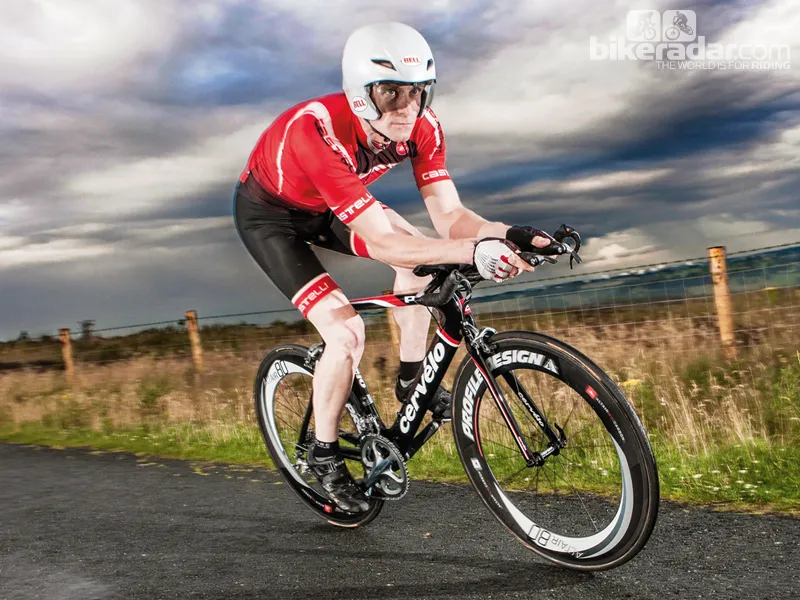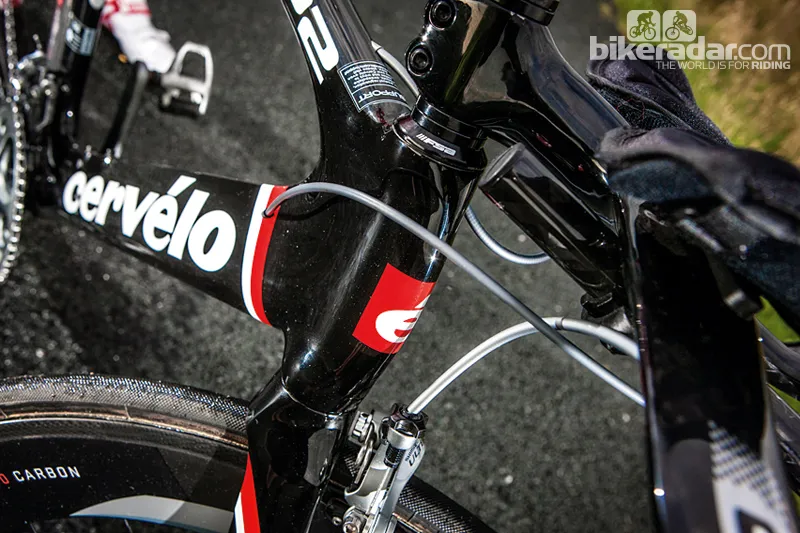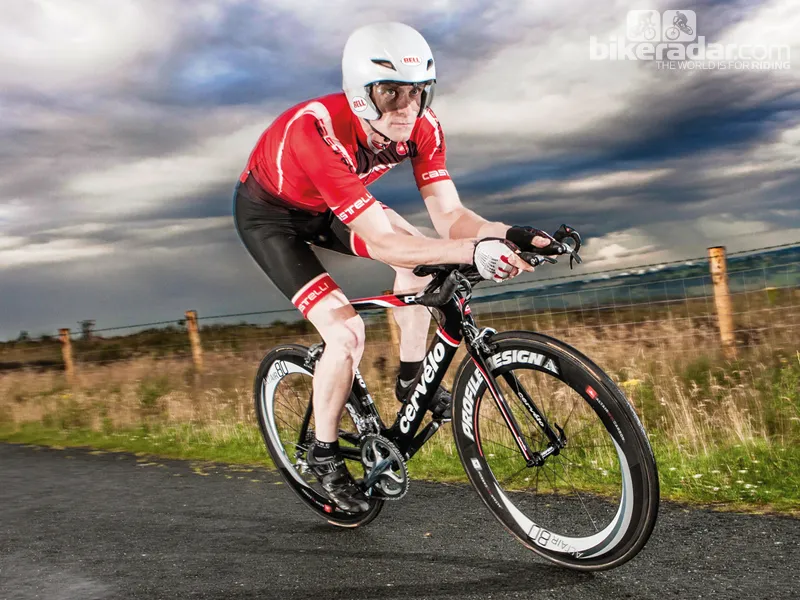While the flagship bikes of the Canadian brand have been through several aero evolutions since the P2C first appeared, its confident, user friendly and naturally rapid ride mean its classic status is still very much intact.
Ride & handling: Friendly, comfortable and with decent steering
It’s a testament to the performance-focused design of the P2 that head down and hammering is the default position on the Cervélo. Even when we deliberately tried to cruise, we’d inevitably find ourselves nudging against the upper limit of our planned training bracket rather than sitting at a mid-range pace.
Some of this is down to the very low weight of the complete bike giving an encouraging response to any power surges. Even though actual power transfer is good rather than outstanding, it climbs really well whether you’re sat and spinning or up and stamping.
The Cervélo also handles very confidently at high speeds, punching straight through gusting side-winds without any panic despite the slab-sided deep wheels and relatively shallow and insecure-feeling arm pads.
We even felt confident cruising along without any hands on the bars while fishing food out of back pockets on longer rides; certainly not something we’d say about a lot of the latest wind tunnel rather than real road-honed bikes.
Balanced weight distribution and accurate tracking from either end mean you can push the pace hard through corners and roundabouts, which is useful in a race situation.
For a bike that naturally wants you to knuckle down and knock out PBs at every opportunity, the P2 is a surprisingly forgiving and friendly bike to ride. Rough road buzz and other detritus pass under the tubs relatively unnoticed, which all helps you reduce fatigue and maintain focus on longer stretches.
In other words, while it doesn’t look or feel as sharp as the latest aero machines, the P2 is still naturally fast. It’s a confident, comfortable and efficient place to spend a ride. It is richly deserving of its reputation as one of the best long-haul race bikes.
Frame & equipment: Lightweight frame with upgrade opportunities
The front end certainly looks old school compared to some of other aero bikes, with the conventional fork plugging into a slimline hourglass head tube and a standard dual pivot brake sitting out in front.
The deep bladed TrueAero down tube and a wheel-hugging cutout that extends more than halfway into the aerofoil seat tube keep it very wind-slippery though. While the signature Cervélo vertical seatpost arrangement only appeared with the introduction of the £2,000 P3 frame, the actual seatpost is the same, complete with two different seat clamp positions giving 75-degree or 78-degree effective seat angles.
Unlike many frames with a big wheel-hugger, the deep seat tube means there’s a lot of vertical adjustment before you have to get the saw out. While it’s not the most aero solution, the conventional rear brake mount keeps setup simple. Similarly, internal cable routing that inserts into the tube sides, not vertically behind the stem, makes for noticeably smoother shifts.
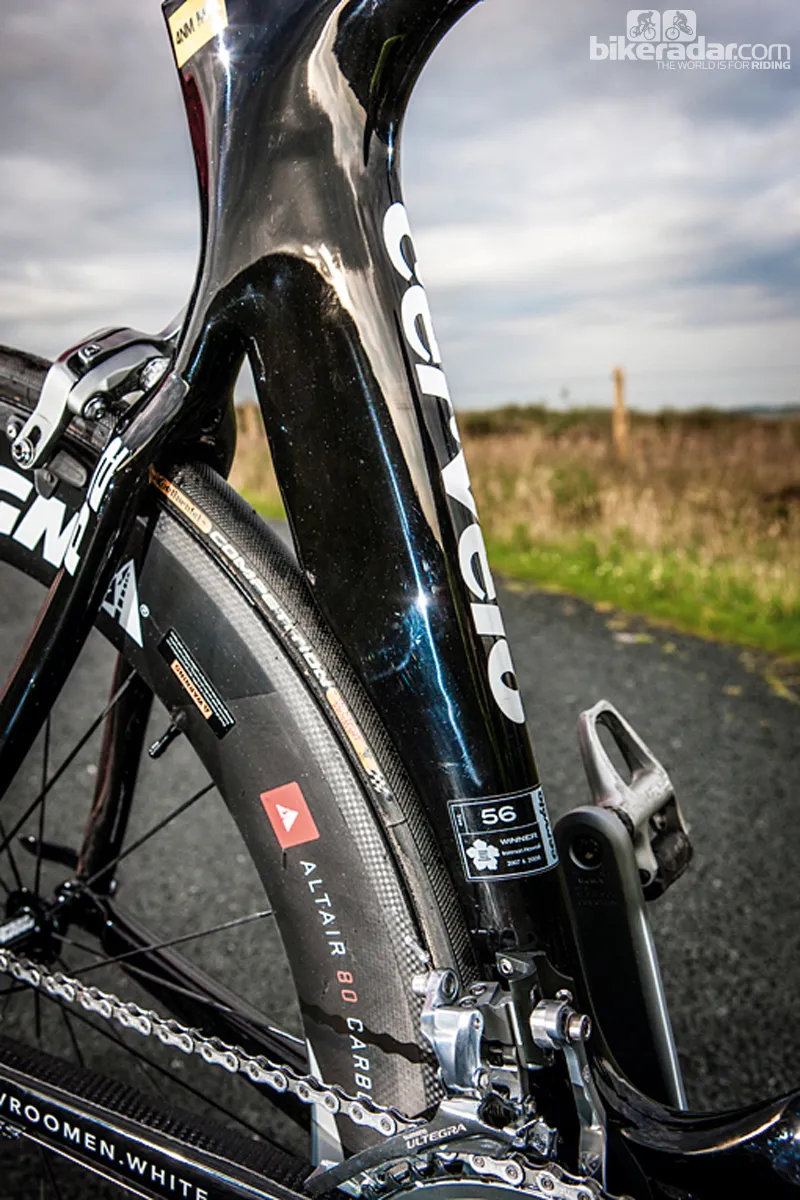
The deep wheel-hugger cutout shrouding the rear wheel
If you’re flexible enough to make a low tuck work efficiently then the body position made possible by the short head tube will probably make more difference than all the missing aero tweaks overall anyway.
While the whole fork is not particularly light, the conventional steerer on the FK26 also means you get a full choice of stem/cockpit options to start your build-up with too. The standard externally threaded bottom bracket also gives a broad range of chainset options and the relatively simple frame approach gives a usefully low frame weight.
While the Cervélo is sold as a frame, seatpost, headset and fork kit, distributors Madison built up our sample with what they called a typical P2 build. We’ve certainly no complaints about the Ultegra transmission and brakes, and the clean cable routing makes the Dura-Ace tip shifters even smoother than normal.
It’s worth noting that the P2 isn’t specifically Di2 compatible, but you could probably rig up a relatively neat solution if that’s a potential build-up choice.
The handling of the P2 is stable enough to handle the 80mm deep Profile tub wheels we used with confidence, but there’s enough frame and brake space to use the latest wide bulge wheels, such as Zipp’s Firecrests, if you want to.
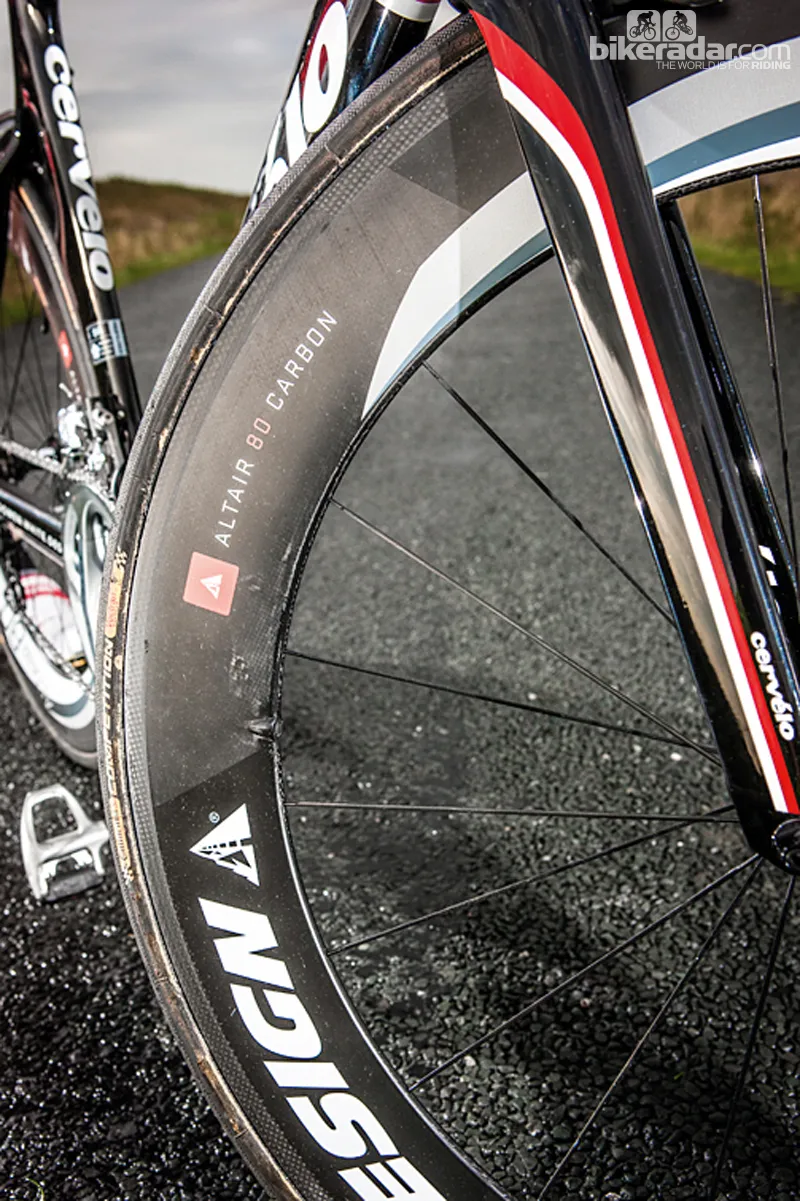
Steady handling means deep-rim aero wheels are easier to use with the P2
Madison also import Profile and Selle San Marco, which accounts for the cockpit and saddle choice. The one-piece CX15 carbon cockpit flatters the overall bike weight, and its low-slung design also lets you exploit the full low front-end potential of the P2.
The Aspide TT saddle isn’t such a weight conscious choice, but the grippy rubber pattern is great for driving round a big gear without slipping. The dropped snout feels remarkably comfortable when you’re absolutely on the rivet in a deep tuck too.
This article was originally published in Triathlon Plus magazine, available on Zinio.

